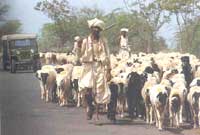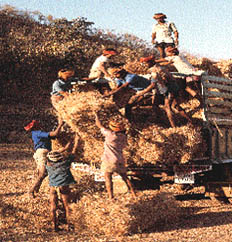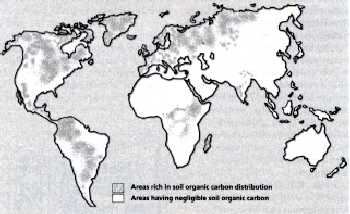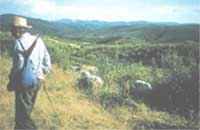
Green revolution in the offing
If an initiative by the department of biotechnology (DBT) to push ecofriendly biofertilisers succeeds, it will revolutionise Indian agriculture and loosen the hold of chemical fertilisers. DBT has

If an initiative by the department of biotechnology (DBT) to push ecofriendly biofertilisers succeeds, it will revolutionise Indian agriculture and loosen the hold of chemical fertilisers. DBT has
Greenhouses made of plastic and wood are creating a green revolution in Ladakh.

In the wake of the Latur earthquake, to make sure it doesn't get caught on the wrong foot once again, the Central government plans to set up a network of seismic stations. The Rs 100 crore technology

There is increasing likelihood that by the early 21st century, water and not energy will claim the primary focus of world attention. There are substitutes for energy other than depleting fossil fuels

The Indian meteorological department has not made its usually accurate early monsoon forecast this year, reportedly at the behest of the finance ministry.

Some now ways of using fortilisers which will prevent nitrogen seepage into the water table
The World Bank, admitting the competition between food and fuel crops for land and water, has asked the national governments to carefully assess economic, environmental, and social benefits and the potential to enhance energy security. In its World Development Report-2008, it said: "The challenge for developing country governments is to avoid supporting bio-fuels through distortionary incentives that might displace alternative activities with higher returns - and to implement regulations and devise certification system to reduce environmental risks.' It suggested that the potential environmental risks from large scale bio-fuels production can be reduced through certification schemes for measuring environmentalaspects. It suggested a Green Bio-fuels Index of GHG reductions. The World Bank quoted that according to some available estimates, current bio-fuel polices the world over, can lead to a five-fold increase of the share of bio-fuels in global transport energy consumption - from 1% today to around 5% to 6% by 2020. "The grain required to fill the tank of a Sports utility vehicle with ethanol (240 kg of maize for 100 litre ethanol) could feed one person for a year, so competition between food and fuel is real,' the World Bank report said. It added that future bio-fuel technology may rely on dedicated energy crops and agricultural and timber wastes instead of food crops. "Technology to break cellulose into sugars distilled to produce ethanol or gasify biomass is not yet commercially viable - and will not be for several years. And some competition for land and water between dedicated energy crops and food crops will likely remain,' the report said. It further said that second generation bio-fuels using cellulosic technologies were likely to require even larger economies of scale, with investment costs in hundreds of millions of dollars just to build one plant. The report admitted that in industrial countries and till recently in Brazil, bio-fuel programmes were supported by high protective tariffs and large subsidies. These policies have caused land conversion away from food and led to an upward pressure on global food prices, severely affecting poor consumers. With a view to make bio-fuels compete with gasoline, industrial countries gave massive support and subsidies. According to recent estimates, more than 200 support measures costing around $5.5-7.3 billion a year in the US amount to $0.38-0.49 per litre of petroleum equivalent for ethanol and $0.45-0.57 for bio-diesel. In this context, the World Bank report questions - Are bio-fuels economically viable without subsidies and protection? It answers: "The breakeven price for a given bio-fuel to become economical is a function of several parameters. The most important determining factors are the cost of oil and the cost of the feedstock, which constitute more than half of today's production costs. Other often more cost-effective ways of delivering environmental and social benefits need to be considered, especially through improvements in fuel efficiency.
Federal government will provide 200 bulldozers for Balochistan and 100 for NWFP, which would be hired out to the farmers at no profit no loss basis to facilitate them in reclaiming the cultivable wasteland. According to the sources in Ministry of Food, Agriculture and Livestock (Minfal), around 219,375 hectares of cultivable wasteland (NWFP 73,125 and Balochistan 146,250 hectares) would be reclaimed through the use of 300 bulldozers. This will enhance agricultural production in the NWFP and Balochistan provinces, sources said. According to an update Minfal study, about 8.12 million hectares of land falls in the category of cultivable wasteland out of which 1.22 and 4.0 million hectares are in NWFP and Balochistan respectively. Provincial Agriculture Engineering Departments need additional machinery and 900 bulldozers to reclaim the cultivable wasteland. Minfal sources mentioned that agricultural growth is key to curtailing poverty since poor heavily rely on agricultural goods and services for their livelihood. In line with the objectives of PRSP, Minfal has approved a number of projects for crop maximisation to reduce poverty and food insecurity in Pakistan in PSDP 2006-07. A number of projects assisted by ADB, FAO and UN/WFP for crop maximisation, increasing food security and promoting poverty alleviation are also under implementation. Sources said that government has given top priority to the development of water resources to maximise crop production. This has been done through progressively increasing surface water supplies and conserving water using the latest technologies and protecting land and infrastructure from water logging, salinity, floods and soil erosion. The main objectives are overcoming the scarcity of water through augmentation and conservation means ie by construction of medium and large dams and by efficient utilisation of irrigation water and restoring the productivity of agricultural land through control of water logging, salinity and floods, sources added. They said that an integrated programme approach for water management has been adopted. On-farm Water Management (OFWM) projects have been implemented on community participation basis in the provinces, AJ&K and Federal Agencies. Water conservation is being ensured under the President's programme for the improvement and lining of watercourses. This programme envisaged lining improvement of 87,000 watercourses at a cost of Rs 66 billion within 3-4 years. This initiative will significantly improve water supply at the farm-gate through reduction in the seepage losses. During the year 2006-07, 18,390 watercourses have been lined and renovated against the target of 18,000 watercourses. Minfal sources stated that the government has fulfilled most of the commitments related to different WTO-specific agreements. Pakistan has already started improving quality and standards of agricultural export commodity markets. Imposition of strict Sanitary and Phyto-Sanitary (SPS) measures and adoption of other significant regulatory steps through the Department of Plant Protection helped increase agricultural exports to the developed countries. Different development projects for the strengthening of laboratories for quality control have been initiated. For grading of agriculture and livestock commodities, grade standards of about 50 commodities, under Grading and Marketing Act, were developed. According to the Minfal study agriculture sector in Pakistan is facing many serious challenges and constraints for future growth. These challenges are embedded in (i) the rising demand for agricultural products with the growth of population and incomes; (ii) the expanding role of free and competitive markets in agriculture trade at the national and international levels. Increased farm productivity, achieved by sustainable use of natural resources and other inputs, and diversification of production from the low value to high value products in response to market demand have to be the key ingredients of future agriculture strategy to make agriculture both productive and profitable; (iii) wide yield gaps in major and minor crops, inefficient use of water at farms, poor quality and availability of agricultural inputs, frequent insect and pest attacks and high incidence of crop and livestock diseases require effective resolution; and (iv) strengthening of agriculture research system is needed to focus more on emerging areas such as biotechnology, genetic engineering, hybrid seeds etc. Improving agricultural knowledge system for effective crop forecasting, and undertaking market reforms in preparation of expanding trade regimes of WTO and Safta are other areas in which Minfal is currently focusing on. Copyright Business Recorder, 2008
Mr. P.G. Jayachandran of Thrissur district in Kerala in his farm. Generating a better income from a limited area is an art, especially in farming operations, where judicious use of available space is an important factor. Very fewfarmers who practise integrated farming succeed in generating a good income from it. Managing successfully Mr. P.G. Jayachandran of Thrissur district in Kerala seems to be case in point. He has been successfully able to manage both crops and animal husbandry in his seven acre farm and integrate the different components into a single unit. He has a dairy unit of nine cows, with a daily milk production of about 60 litres. A part of the milk is sold to a milk society and the rest is used for making value added products such as buttermilk and ghee. Organic manures Fodder grass for the cattle is raised as an intercrop in his farm and coconut oil cake is used as feed for the animals. Organic manures such as cattle manure are the main source of nutrients for his crops. He also has a collection of Malabari, Jamnapari and Sannan goat breeds which are mainly used for kid production. A piggery unit comprising large White Yorkshire and Landrace breeds, is primarily used for utilisation of agricultural waste. The piggery unit provides him considerable income without much expenditure, according to Dr. Sabin George, Assistant Professor (Animal Husbandry), Krishi Vigyan Kendra (KVK), Thrissur. Back yard poultry with about 50 layer birds of Gramalakshmi and Rhode Island Red breeds yield about 40 eggs daily which are sold in the market. In addition, he also has turkey, quail and guinea fowl. Good demand He has about 200 coconut palms, yielding 150 nuts a year, a part of which is used for seed nut production for his own nursery. The remaining nuts are used for production of coconut oil which has a good demand at his farm itself. He earns aboutRs. 1lakh a year from coconuts alone, after meeting all the expenses. According to Dr. T.N. Jagadeesh Kumar, Associate Professor, KVK, Thrissur, the different enterprises in his farm are arranged systematically to encourage maximum utilization of land and resources and integration of various components. Plantation crops such as rubber, coconut, and arecanut occupy the prime area of the farm. Other crops such as vegetables, banana, pepper, cocoa, colocasia, elephant foot yam, and yams are intercropped, wherever feasible. The animal sheds are situated at the middle to facilitate transport of manures to all parts of the farm. Water harvesting Water harvesting devices (tanks lined with silpauline sheets) are located at an elevation which permits gravitational flow of water to all parts of the farm. Fish varieties such as Rohu, Catla, Grass carp and Mrigal are bred in a twenty-five cent pond in the farm, and the slurry used for irrigation. In addition, Mr. Jayachandran maintains a biogas plant and vermicompost unit for organic manure production. He raises azolla in shallow tanks for feeding poultry and cattle, which improve the quality of produce. Intercropping The coconut and arecanut gardens are intercropped with banana, colocasia and yams. He has a wide collection - about 15 types of banana. He considers banana as a maximum utility crop since all the plant parts are used - bunches harvested, suckers sold and the pseudostem used for mulching and vermicompost production. Banana cultivation, mostly intercropped, alone gives him an annual return of Rs.85,000. The farmer also has about 50 nutmeg trees, intercropped with garcinia, and coffee. Part of the garcinia and coffee is used for home consumption and the balance, marketed. He maintains a nursery in his farm where good quality seedlings of all the crop varieties grown and sold. Readers can contact Mr. P. G. Jayachandran, Puthuppally House, Kaniarkode Post, Pin 680 659 Thiruvilwamala Via, Thrissur 680 594 and Dr. T N. Jagadeesh Kumar, Associate Professor (Agronomy), mobile: 9447467288 and Dr. Sabin George, Assistant Professor (Animal Husbandry), K.V.K, Thrissur, Vellanikkara, KAU Post, pin 680 656, mobile: 9446203839.
The Karnataka Rajya Raitha Sangha has charged these 23 foreign collaborations with exploiting the country"s genetic wealth in the agriculture sector:

Hemmed in by intensive agricultural and industrial activity, pastoralists are finding less room to carry on their activities. This could upset the delicate balance of agricultural ecosystems.

Historians generally agree that the death of the Indus Valley civilisation did not occur because of a single dramatic event, but came about due to several factors. One probability is that the people of that age mismanaged natural resources

Jhabua in Madhya Pradesh is a many splendoured wonder where indomitable political will and the tribals have proved that the regeneration of the environment is possible, reports <font class='UCASE'>Richard Mahapatra</font>

Scientists fear the Mexican beetle, introduced to counter the adverse effects of a weed, may destroy the sunflower crop.
Now that the jury is out on the very real threat of climate change, we must focus on what needs to be done. The recent report of the Intergovernmental Panel on Climate Change ipcc should make

Cyclones that traverse the Indian peninsula from the Bay of Bengal to the Arabian Sea are a common enough feature. But over the past few years, the devastation they cause in Kanniyakumari district has increased because of deforestation.

By maintaining terrestrial forestation to improve the soils, drylands can be saved from being further degraded

How does a civilisation relate to the environment? To find out, study its attitude towards large carnivores. Europeans have tried to dominate nature. In the process, they have exterminated several large carnivores like the wolf. But communities in India

Scientists have isolated a gene that can break down oxalic acid, the primary culprit that damages tissue and leaves the victim gasping in pain

The move to use a new herbicide to eradicate the coca plant spells trouble for South America s rainforests